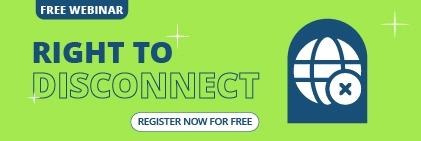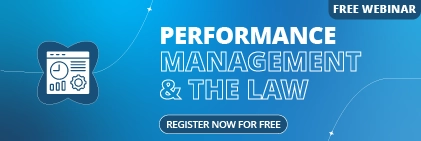If you manage people, you already know how important it is to keep everything running smoothly.
When scheduling goes wrong or attendance records are inaccurate, productivity suffers. Employees can become frustrated, and customers notice the difference.
Even small mistakes, such as scheduling too few staff during busy periods, can cost a business both money and reputation.
This is where workforce management software (WFM software) comes in.
It’s designed to help you streamline every aspect of managing your workforce—from time and attendance tracking to forecasting, compliance, and employee engagement. In short, it provides you with better control, greater visibility, and the tools to make more informed decisions.
With remote teams, flexible hours, the gig economy, and stricter workplace laws, you can’t afford to rely on outdated methods. Traditional spreadsheets and manual systems can’t keep up with the complexity of modern workforce needs.
Businesses that fail to adapt risk falling behind competitors who are already using competent workforce solutions.
In this blog post, you’ll discover:
- What workforce management really means.
- What workforce management software does and how it works.
- The core features you should look for.
- The key benefits for your business and your employees.
- Why this kind of software matters more than ever in today’s workplace.
- How to choose the right solution for your needs.
Let’s jump in!
What Workforce Management Really Means?
Before diving into the software itself, it’s essential to take a step back and consider the broader picture: workforce management.
At its core, workforce management (WFM) is about ensuring the right people are in the right place at the right time, performing the right tasks. It’s the discipline of balancing business needs with employee needs in a way that keeps operations running smoothly.
Workforce management covers everything from scheduling and attendance tracking to compliance with workplace laws.
It’s the system that ensures your team is productive, costs are under control, and employees feel supported.
In other words, it’s not just about managing shifts – it’s about managing people in a way that makes business sense.
The Main Goals of Workforce Management
There are three main objectives behind workforce management:
- Optimising productivity: making sure your business runs efficiently by aligning staffing levels with demand.
- Ensuring compliance: following workplace regulations and avoiding costly mistakes.
- Improving employee experience: creating fair schedules, supporting work-life balance, and building trust.
When these three goals are in balance, both the business and employees benefit.
Traditional Methods vs. Modern Approaches
Traditionally, workforce management was handled using paper rosters, spreadsheets, and manual approvals.
While this approach may have been practical for small businesses decades ago, it’s no longer useful in today’s fast-paced workplace.
Mistakes are common, and managers often spend more time fixing scheduling errors than focusing on strategic goals.
Modern workforce management, however, is about automation, data, and accessibility.
With the right tools, you can instantly generate optimised schedules, track attendance in real time, and gain valuable insights into how your workforce is performing.
Rather than constantly reacting to issues as they arise, you can anticipate challenges and make more informed choices.
What Is Workforce Management Software?
Now that you understand the concept of workforce management, let’s look at how software takes it to the next level.
Workforce Management Software, often referred to as WFM software, is a digital tool that helps you plan, track, and optimise your workforce. Instead of juggling spreadsheets, emails, and separate systems, everything is managed in one place.
This makes it especially powerful for businesses with fluctuating demand, such as retail, hospitality, healthcare, or call centres.
Whether you manage ten employees or thousands, WFM software can scale to fit your needs.
Key Components of Workforce Management Software
While the specific features vary between platforms, most WFM tools include:
- Scheduling & shift management: quickly building optimised rosters.
- Time & attendance tracking: accurate recording of hours worked.
- Leave & absence management: smooth handling of holiday and sick leave requests.
- Compliance monitoring: ensuring your business meets legal obligations.
- Reporting & analytics: giving you real-time insights to make data-driven decisions.
You’ll see these features in more detail later, but what matters here is that the software centralises everything so you’re not chasing data across multiple systems.
Who Uses WFM Software?
You might think WFM software is only for large corporations, but that’s not true.
Businesses of all sizes and industries use it:
- Retail & hospitality: managing seasonal staff and peak trading hours.
- Healthcare: ensuring safe staffing levels while complying with regulations.
- Call centres: balancing workloads, reducing absenteeism, and improving service levels.
- Manufacturing & logistics: scheduling shifts, monitoring overtime, and managing costs.
- Remote & hybrid companies: tracking attendance across different locations and time zones.
If you manage people and want to save time while improving efficiency, WFM software can work for you.
WFM Software vs. HRIS/HRMS
One common misconception is the distinction between workforce management software and HR software, such as an HRIS (Human Resource Information System) or HRMS (Human Resource Management System).
Here’s the difference:
- HRIS/HRMS – focuses on employee records, payroll, onboarding, and overall HR administration.
- WFM software – focuses on the day-to-day operation of your workforce, including schedules, attendance, and productivity.
They complement each other, and in many cases, WFM software integrates seamlessly with HR and payroll systems to create a complete solution.
Core Features of Workforce Management Software
Workforce management software comes packed with features designed to make your life easier.
Each one is designed to address the everyday challenges that managers, HR professionals, and business owners encounter.
Let’s break them down.
1. Time & Attendance Tracking
Gone are the days of punch cards and manual timesheets. With WFM software, employees can clock in and out using a mobile app, biometric scanners, or web portals.
This means you get accurate, real-time attendance data. No more chasing missing timesheets or worrying about “buddy punching” (when someone clocks in for someone else).
2. Scheduling & Shift Management
Building schedules can take hours if you’re doing it manually. With WFM software, you can create optimised rosters in minutes.
The system considers employee availability, labour laws, and demand forecasts to ensure you’re never over- or under-staffed. Many systems also allow employees to swap shifts themselves, which saves you even more time.
3. Leave & Absence Management
Managing leave requests can feel like a never-ending email chain.
WFM software automates the process, allowing employees to request time off through a portal or app and managers to approve it with a single click. You’ll always have a clear overview of who’s off and when, making it easier to plan.
4. Labour Cost Management
Labour is often the most significant expense for a business. WFM software helps you control costs by tracking overtime, monitoring budget limits, and ensuring you’re not overstaffing.
You can easily see where money is being spent and adjust accordingly.
5. Performance Analytics & Reporting
You can’t improve what you can’t measure. WFM tools provide dashboards and reports that display key metrics, including productivity, absenteeism, and labour costs.
This data helps you make smarter decisions about staffing, performance, and planning.
6. Forecasting & Demand Planning
Some days are busier than others. WFM software utilises historical data and AI to predict demand, enabling you to schedule staff accordingly.
This is especially valuable in industries like retail and hospitality, where demand fluctuates.
7. Compliance & Labour Law Management
Staying compliant with workplace laws can be a headache.
WFM systems help by automatically flagging potential breaches, such as excessive overtime or missed breaks, thereby enabling organisations to address these issues promptly. This keeps you compliant and avoids costly penalties.
8. Employee Self-Service Portals
Modern employees want control and transparency. Self-service portals enable them to view schedules, request leave, and check their hours at any time.
This reduces administrative work for managers and gives employees more autonomy.
9. Integration Capabilities
Most WFM software integrates with payroll, HR, ERP, or even point-of-sale systems. This means you’re not stuck entering data twice – everything flows smoothly between systems.
10. Mobile Accessibility
Today’s workforce is mobile, and your software should be too. Mobile-friendly WFM platforms enable managers to approve requests on the go and allow employees to clock in from remote locations.
This is especially useful for hybrid and remote teams.
Benefits of Workforce Management Software
Now that you are familiar with the features, let’s examine the real-world benefits. Workforce management software doesn’t just save time – it can transform the way your business operates.
Business Benefits
- Increased efficiency & productivity: Automation takes over repetitive tasks, such as scheduling, so that you can focus on strategy. This leads to smoother operations and less wasted time.
- Reduced labour costs: By tracking hours accurately and forecasting demand, you can minimise overtime and prevent overstaffing. That means a healthier bottom line.
- Improved compliance: With automated compliance checks, you’ll avoid penalties and reduce risk. No more sleepless nights worrying about workplace laws.
- Data-driven decisions: The reporting tools give you insights you can act on. Instead of guessing, you’ll make decisions based on facts.
- Better customer service: When staffing levels are correct, your customers notice fewer delays, faster service, and happier clients.
Employee Benefits
- Fair scheduling & work-life balance: Employees can see their shifts in advance and have input in the process. This creates trust and reduces stress.
- Easy access to information: Through self-service portals, employees can view their schedules, submit leave requests, and track their hours at any time.
- Transparent communication: No more confusion about shifts or policies – everything is clear and accessible.
- Career growth tracking: With performance data, managers can provide employees with constructive feedback and support their career development.
The result? A happier, more engaged workforce – and that directly impacts your business success.
Why Workforce Management Software Matters Today
The world of work is changing fast. Workforce management software is no longer a “nice to have” – it’s a must. Here’s why.
- Adapting to Remote & Hybrid Work: With employees spread across different locations, you need a centralised system to track attendance, schedules, and productivity. WFM software makes this seamless.
- Supporting the Gig Economy & Contingent Workforce: More businesses are relying on contractors, freelancers, and gig workers. Managing them manually is almost impossible. WFM software helps you coordinate flexible workforces without losing control.
- Dealing with Compliance Pressures: Workplace laws are stricter than ever. Whether it’s fair work rules, leave entitlements, or health and safety, compliance mistakes can be costly. Automated compliance tracking keeps you protected.
- Responding to Talent Shortages: With talent competition so fierce, employee experience matters. A fair and transparent scheduling system, along with easy self-service access, can help you attract and retain top talent.
- Leveraging AI & Automation: The future of work is digital. AI-driven forecasting, real-time analytics, and mobile accessibility are now standard. If you don’t keep up, you risk being left behind.
In short, WFM software isn’t just about saving time – it’s about future-proofing your business.
How to Choose the Right Workforce Management Software
With so many options available, how do you choose the right one? Here’s a step-by-step guide.
Step 1: Identify Your Needs
Start by asking: what problems are you trying to solve? Is it scheduling? Compliance? Or perhaps cost management? Write down your must-haves.
Step 2: Define Budget & Scalability
Consider your current budget, as well as your future needs. Will the software grow with your team as it expands?
Step 3: Compare Features & Integrations
Ensure the software includes the core features you need and can integrate seamlessly with your existing payroll or HR systems.
Step 4: Check Vendor Support & Compliance
Does the vendor provide training, customer support, and compliance updates? Good support can make or break your experience.
Step 5: Run a Pilot Test
Always test before committing. A pilot project helps you see how the software works in real-life scenarios and whether employees will effectively adopt it.
Conclusion
You’ve seen what workforce management software is, what it does, and why it’s so important.
From scheduling and compliance to employee engagement and cost control, it’s a tool that can completely change how you run your business.
The truth is, managing a workforce without the right software is like trying to drive without a map. You might get there eventually, but it will take longer, cost more, and cause unnecessary stress.
That’s why it’s worth choosing a trusted provider like Sentrient.
With Sentrient’s workforce management solutions, you’ll get an easy-to-use, scalable, and compliant system that fits your business needs. Whether you’re managing a small team or a large, complex workforce, Sentrient gives you the tools to stay in control, keep your employees happy, and achieve better results.
Next step: Don’t wait until problems pile up.
Contact Sentrient today for a free demo and discover how workforce management software can transform the way you work.
FAQs
1. What is workforce management in simple terms?
Workforce management is the process of ensuring the right people are assigned to the right jobs at the right time. It’s about striking a balance between business needs and employee needs.
2. How is WFM software different from HR software?
HR software manages employee records, payroll, and onboarding processes. WFM software manages daily operations like schedules, attendance, and compliance. They complement each other.
3. What types of businesses benefit most from WFM software?
Any business that manages people can benefit, but it’s especially valuable in retail, hospitality, healthcare, call centres, and remote teams.
4. Is WFM software costly to implement?
It depends on the size of your business and the features you need. Cloud-based options, such as Sentrient, are usually affordable and scale with your company.
5. Can WFM software integrate with payroll systems?
Yes, most WFM software integrates with payroll and HR systems to ensure smooth data flow.
6. How does WFM software improve compliance?
It tracks working hours, breaks, and leave automatically, ensuring you stay compliant with labour laws.
7. Is WFM software suitable for remote teams?
Absolutely. Cloud-based systems enable easy management of employees across multiple locations and time zones.
8. What are common mistakes when using WFM tools?
Not training staff properly, failing to utilise all the features, and not keeping data up to date.
9. What industries use WFM software the most?
Retail, healthcare, hospitality, call centres, and manufacturing are the biggest users, but any industry can benefit.
10. How quickly can a company see ROI from WFM?
Many businesses see improvements within the first few months, especially in reduced labour costs and increased efficiency.
11. Is Sentrient’s workforce management solution customisable?
Yes, Sentrient offers flexible, scalable solutions that can be tailored to your specific business needs.
12. How do I know if my business is ready for WFM software?
If you’re struggling with scheduling, compliance, or labour costs, it’s time to consider WFM software. Even small teams can benefit.





